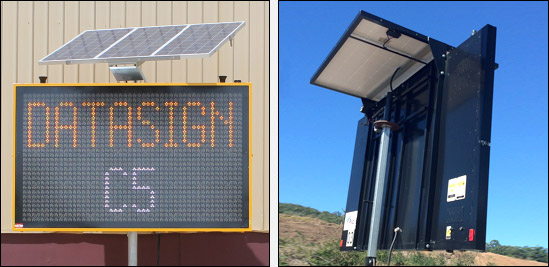
Traffic management equipment, such as <a href="/Products/Arrowboards" title="Arrow Board Trailers">Arrow boards</a>, <a href="/Products/Portable-Traffic-Lights" title="Portable Traffic Lights">PTL’s</a> and <a href="/Products/Variable-Message-Signs" title="Variable Message Signs">VMS boards</a>, need to be left unattended for long periods of time and still continue to run efficiently. Whether in remote regions or high-traffic areas, work sites can’t afford to have poorly operating, unreliable boards creating chaos on roads. If your equipment running time is not reaching its maximum, it could indicate non-compliance with Australian standards or the issue may be a user error.
<br /><br />
Under Australian standards the solar panel array for a VMS board should be capable of operating ‘for a continuous period of 24 hours under a solar irradiation of 40,000lx for four hours’, while still charging the reservoir battery.
<br /><br />
However, it is common for people to find their signs do not last the total specified time. While this could be an indication that your equipment doesn’t meet Australian Standards, it could also mean that the solar array isn’t in its optimal position.
<br /><br />
<b>Adjusting the array accordingly</b>
<br /><br />
A lot of solar powered traffic management equipment is equipped with solar panels that are flat and upward facing, which on first assessment may seem like the easiest and quickest way to harvest sunlight. However, for optimal exposure to sunlight, the solar array should be facing perpendicular to the Sun, and thus due north at all times.
<br /><br />
While the time of year has an impact on the amount of sun being harvested at any given time, being in Australia means that the sun is predominantly shining from the north. To get the most exposure to sunlight, the solar panel should be facing due north. An array facing east or west for example, will have a result that is even worse than if it was sitting flat and upwards. The tilt of the array should also be adjustable to maximise exposure. In summer when the Sun’s path is the highest, the panels should be tilted up to only 10 degrees. In winter and cooler months when the Sun is at a relatively lower angle as it tracks across the sky further north, the tilt should be adjusted to a greater angle of up to 30 degrees. Watch this video for more information <a href="https://youtu.be/gkltQr2GpPA" target="_blank">(click here)</a>.
<br /><br />
<b>Avoid this common positioning mistake</b>
<br /><br />
While most people installing equipment like VMS boards and PTL’s know not to place them in a shady area like under a tree, sometimes they forget to account for the moving sun. While at the time of setup there may not be shade affecting the solar array, as the sun moves shadows may be cast from nearby objects that minimise the sunlight that can be harvested.
<br /><br />
<b>Light sensing LEDs</b>
<br /><br />
Another major factor that affects the running time of traffic management equipment is its ability to adjust the intensity of its lights depending on environmental lighting conditions. Traffic management equipment that is compliant with Australian standards will have sensors that automatically detect the environmental light conditions and adjust the intensity of the LEDs accordingly.
<br /><br />
This not only makes the signs more visible for road users but it also reduces the amount of power needed to operate the equipment, improving its running time.
<br /><br />
<b>High-quality equipment is key</b>
<br /><br />
Mr Venema, CEO of Australian traffic management equipment manufacturer, Data Signs, said the <a href="/Products/Variable-Message-Signs" title="Data Signs VMS">DataSign-VMS</a> message board range are all solar powered. The <a href="/Products/Options" title="Manual STR">solar tilt/rotate system</a> on Data Signs equipment has been custom developed to allow the operator to tilt and rotate the solar array to the optimal angle to capture the most sunlight each day.
<br /><br />
“By rotating the bottom edge of the solar array to face due north and tilting the solar array slightly for summer and more for the winter season, the amount of sunlight hitting the solar array each day increases and this helps keep the batteries charged depending on environmental conditions,” Mr Venema said.
<br /><br />
“If you have equipment with a flat array or you aren’t properly positioning and titling your array you can expect a drop in efficiency and running time of your equipment as the battery will deplete quicker than the Sun can recharge it.”




